Figures show that free-from food has evolved from a super-niche category to a sector displaying signs of some seriously healthy growth.
According to Mintel, the overall free-from market, encompassing products for people who want to avoid dairy, egg and gluten, grew an impressive 50% in the past year, reaching £360m.
It’s not a bad showing for products that used to be tucked away on the dustiest of health store shelves, but are now becoming everyday family staples. Mintel reports that in the first half of 2014 one in five of us bought or ate something gluten-free.
This is great news for c-store retailers looking to grab a piece of the gluten-free pie. But what exactly are the drivers bringing free-from to the fore?
“It’s definitely a growing trend that we’re seeing,” confirms Max Jenvey from Oxxygen Marketing.
Complex consumers
”Our research tells us there are more than 27,000 Internet searches in the UK for ‘Gluten Free Diet’ each month, with more and more consumers believing there are health benefits to a gluten-free lifestyle. Also, more than one in five of the UK population consider themselves to have a food allergy or intolerance.
“As the dietary needs of consumers are becoming increasingly complex, naturally gluten-free products such as basmati rice are providing a simple and filling carbohydrate. Tilda caters for this with an entire product offering, including all 20 Ready to Heat basmati recipes and Tilda Kids. “
Anna Beheshti Head of mainstream marketing at Tilda
“I think that it really breaks down into two distinct audiences. On the one hand are people who may be intolerant to wheat and gluten, so they have to restrict their diet for medical reasons.
“On the other you find a growing number of health-conscious people who are choosing to cut out gluten and wheat in search of a leaner diet which gives them more energy and vitality.”
This idea that free-from foods are naturally ‘healthier’ for those without allergies and intolerances has been criticised by some experts. And yet, in the public’s perception, it’s now one of the most visible categories in a section of the store that used to be marked ‘health foods’.
These include organic, vegetarian and other product groups that have made the long trip from the larders of health-conscious ex-hippies to become c-store regulars.
Adrian Buck from Budgens Chorleywood, Hertfordshire, has seen for himself how demand has grown over the past couple of years. “Overall, free-from does really well for us,” he says. “The ball started rolling quite slowly after an initial rush of people coming in and asking for gluten-free foods. However, we’ve now built up enough custom to fill a dedicated one-metre section of the store.
“I think the popularity is there because people are more aware of gluten-free diets, and they know that the products are out there. Our free-from stock is a real mix - everything from gluten-free bread to cereal bars and cakes.”
As Adrian points out, getting the mix right depends on understanding your local customer demographic. Yet, research from HIM suggests that there’s support for these products across the board.
HIM asked a sample of 300 adults which speciality food they would like to see at their local convenience store. The survey found 18% of consumers would like more gluten-free choices, while 17% wanted more wheat-free food.
“This would suggest that free-from is growing in importance for c-store customers, with almost one in five looking for them to offer more gluten-free products and roughly the same proportion looking for dairy and wheat-free products too,” says Blake Gladman, HIM research director.
“With this in mind, it’s important for convenience store owners to keep on top of the latest food and health trends and ensure that they are offering the right range for their customers.”
One of the smartest ways to dip a toe in the free-from market is to invest in snacks. Fruit-based gluten-free bars such as 9bar and Nakd make a neat cross-over with confectionery - which suits all kinds of wellbeing-savvy consumers.
Michelle Berriedale-Johnson, who organises the annual Free-from Food Awards, says that the success of gluten-free bars has paved the way for more manufacturers to experiment in the sector.
“Entry just closed for our 2015 awards and we are snowed under with bars of every shape and size - superfood, cereal, fruit, raw, sugar-free, high energy - you name it,” she says.
Meat-free is a la mode
According to Mintel, the meat-free sector recorded a 21% rise in value sales between 2008 and 2013.
And with one in four 16- to 24-year-olds looking to reduce the amount of meat they eat, it’s no surprise that it’s a rising category.
“Research shows that selecting meat-free options is an increasing market trend, made easier for consumers by a widening range and availability of products,” says Vanessa Brown, head of business and catering services at the Vegetarian Society.
“Convenience, versatility and affordability have all contributed to their growing success, as have wider factors such as safety and traceability of meat products, and animal welfare concerns.”
She says that young people’s interest in a low-meat lifestyle is often down to ecological factors as well as health issues.
“According to a 2013 study, 40% of people aged between 18 and 24 said they were aware of the environmental impacts of producing and eating meat, compared with only 8% six years earlier,” she says.
Brown adds that a solid, but diverse, range of meat-free products needs to be stocked. “Veggies and people cutting back on meat have the same preferences and other dietary needs as anyone else,” she says.
She confirms that there’s plenty of choice for c-stores looking to expand beyond bars, too. “It’s not just bars, but all those on-the-go porridge pots and breakfast cereals, pies, falafel and hummus dip combinations.”
Sandeep Bains, from Simply Fresh Faversham in Kent, says that the snacking route into wellbeing has been a hit at his store.
“We have one whole bay of healthy snacks, including gluten-free products such as bars and yogurt-coated peanuts, which attracts just about everyone who comes into the shop,” he says.
“Overall, we have two bays of ‘Goodness Foods’. We’ve got everything from organic soups through to ready meals. We do well with the Amy’s Kitchen meals, which are gluten-free as well as being low-fat.”
Sandeep recommends making a point of good merchandising and clear signposting for the category. He also advises ensuring that the price point is realistic.
“It’s all about good food and good displays at a good price,” he says. “Although free-from foods generally carry a bit of a premium you can’t get carried away with the price or people won’t come back.”
As the aisles fill up with healthy free-from versions of existing fare, there’s still one category that’s currently underexploited by c-stores: food to go.
“Food to go is definitely a growing market,” says Berriedale-Johnson. “There’s huge demand - and it’s still relatively poorly served. When high street stores such as Costa actually make free-from widely available there is a very good take-up from consumers. They put a gluten- and dairy-free chicken wrap in all their stores last spring and couldn’t keep up with demand.”
Obviously, offering a full free-from food-to-go selection at every store might not fit with the local market. But Jenvey says that there could still be space for a limited offer. “What retailers need to do is offer a balance. In some places people will want only sausage rolls, breakfast goods and the like,” he says.
Jenvey believes that a free-from food-to-go option could be as easy as offering one variety of sandwich with gluten-free bread. And he also cites Oriental-inspired dishes as a simple way to cater for free-from consumers.
To this end, Jenvey is currently working with the Chopstix Group to develop a ‘Chopstix Express’ range that will provide c-stores with a fusion-style rice and sauce-based ‘heat and eat’ offer featuring MSG-free and gluten-free ingredients.
Away from the Eastern influence, he also advises finding ways to signal ‘health’ while going beyond simple salads. “I think people are tired of salads - so we need to look at rice, noodles and flat-breads that don’t contain gluten,” he says. “Gluten-free pasta can be a good option.”
Meanwhile, retailers and suppliers seeking the ‘next big thing’ in free-from packaged products may find it in the sugar-free market - which Berriedale-Johnson believes is set to expand far beyond the current focus on soft drinks and gum.
“This year we have had entries for sugar-free products in every category of the awards,” she says.
IN BRIEF
Good grains
The ready-to-heat rice category is set to receive a healthy boost with Tilda’s gluten-free Brown Basmati & Quinoa variant - a smart way to get one of the world’s most difficult-to-spell super-foods onto c-store shelves.
Better bars
9bar has set the trend for healthy snacking with its nut and seed-based energy bars. They tick all the gluten-free boxes, while also managing to hit health-conscious consumers’ sweet spots.
Veg out with Amy
Amy’s Kitchen is adding some spice to the sector with its new Chinese Noodles & Veggies option to meet demand from the 50% of consumers looking for gluten-free meal solutions, according to research from Food Network EMEA.
Taste the tiger
Eastern food brand Tiger Tiger is aiming for the meal-tonight market with its new gluten-free Indian Quick Cook Sauces. The emphasis is on authenticity, as well as health, in a selection which includes Punjabi Style Butter Chicken and Jaipur Style Jalfrezi.
Gluten-free moves into mornings
Nestlé Cereal Partners brought gluten-free cereals to the mainstream when Gluten Free Cornflakes and Honey Cornflakes hit retailers’ shelves at the end of last year.
Free-from ice cream
Unilever’s free-from ice cream brand Swedish Glace has moved under the Wall’s brand, giving the Wall’s brand a free-from positioning. Juicy Raspberry and Smooth Vanilla Swedish Glace have an rrp of £2.69, available in a case containing six 750ml tubs.
Source
Matt Chittock





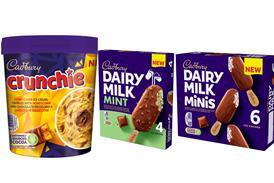
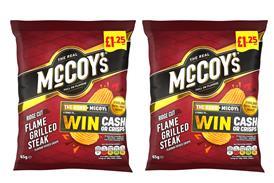
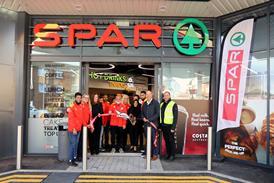








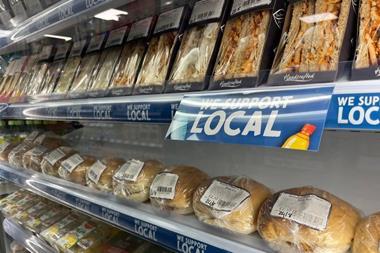
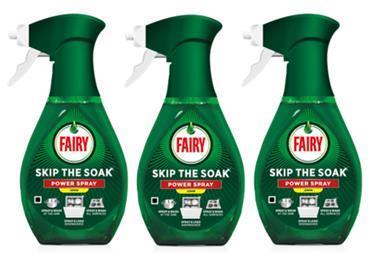
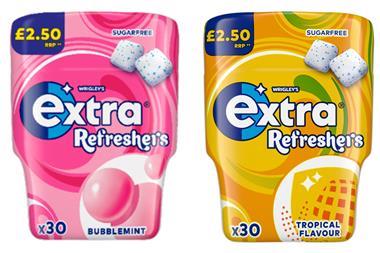
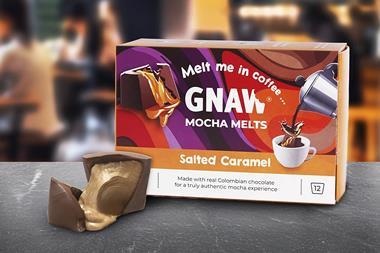








No comments yet